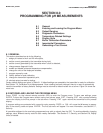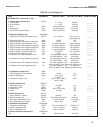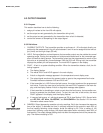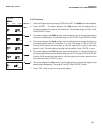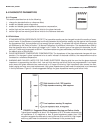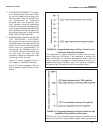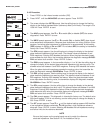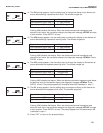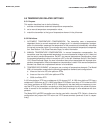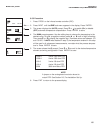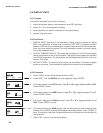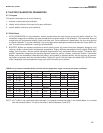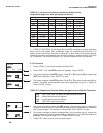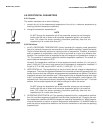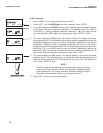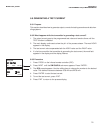
64
MODEL 3081 pH/ORP SECTION 8.0
PROGRAMMING FOR pH MEASUREMENTS
8.5 TEMPERATURE RELATED SETTINGS
8.5.1 Purpose
This section describes how to do the following:
1. activate and deactivate automatic temperature compensation,
2. set a manual temperature compensation value,
3. match the transmitter to the type of temperature element in the pH sensor.
8.5.2 Definitions
1. AUTOMATIC TEMPERATURE COMPENSATION. The transmitter uses a temperature-
dependent factor to convert measured cell voltage to pH. In automatic temperature compen-
sation the transmitter measures the temperature of the process and automatically calculates
the correct conversion factor. For maximum accuracy, use automatic temperature compensa-
tion. See Section 13.6, Glass Electrode Slope, for more information.
2. MANUAL TEMPERATURE COMPENSATION. In manual temperature compensation, the
transmitter uses the programmed temperature to convert measured voltage to pH. It does not
use the actual process temperature. Do NOT use manual temperature compensation unless
the process temperature varies no more than ±2°C or the pH is between 6 and 8. See Section
13.6, Glass Electrode Slope, for more information about errors associated with improper tem-
perature compensation. Manual temperature compensation is useful if the sensor temperature
element has failed and a replacement sensor is not available.
3. TEMPERATURE ELEMENT. pH sensors use a variety of temperature elements. The Model
3081 pH transmitter recognizes the following temperature elements and configurations:
a. three and four wire 100 ohm platinum RTDs
b. three and four wire 1000 ohm platinum RTDs
c. 3000 ohm Balco RTD
A 100 ohm platinum RTD has a resistance of 100 ohms at 0°C. A 1000 ohm platinum RTD has a
resistance of 1000 ohms at 0°C. A 3000 ohm Balco RTD (Balco is an alloy of 70% nickel and 30%
iron) has a resistance of 3000 ohms at 25°C. Although only two lead wires are necessary to con-
nect the RTD to the transmitter, connecting a third (and sometimes fourth) wire allows the trans-
mitter to correct for the resistance of the lead wires and for changes in wire resistance with tem-
perature.
The Model 3081 pH/ORP transmitter can also be used with a two-wire RTD. Select a three-wire
configuration and jumper the RTD return and -RTD sense terminals (terminals 3 and 4, respec-
tively).



